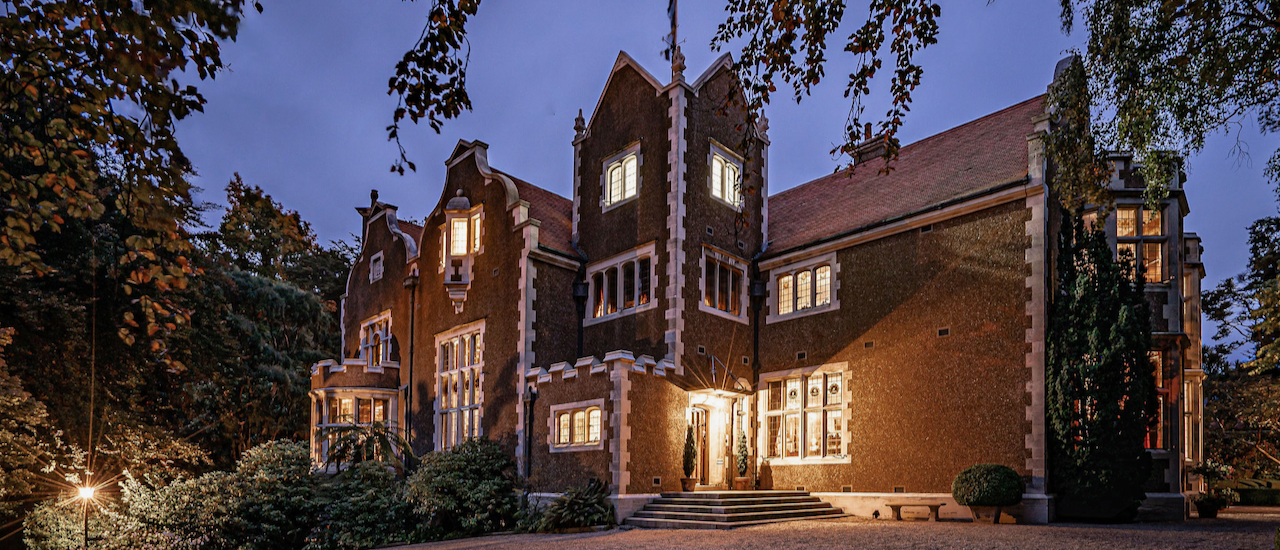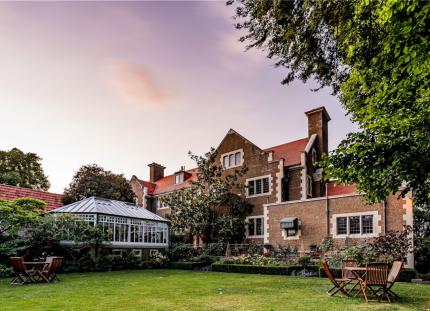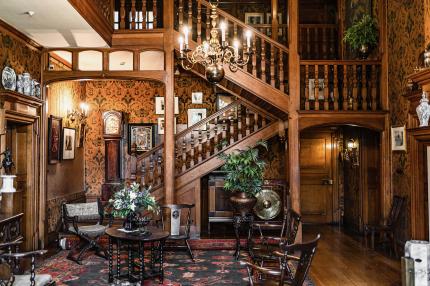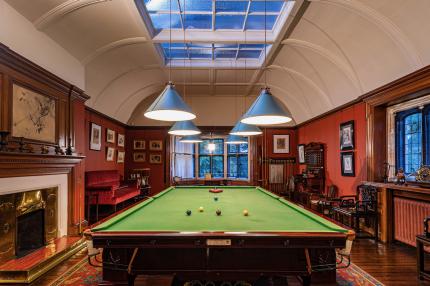
Olveston historic house, Dunedin
Jo Percival visits Olveston, the historic home in Dunedin that was way ahead of its time.
Modern. High-tech. Cutting edge. These are not adjectives you’d expect to use when describing a house that’s nearly 120 years old. But Olveston, the historic home that sits on Dunedin’s leafy Royal Terrace, boasts breathtakingly advanced features that would put some of today’s contemporary houses to shame. It is a testament to what a progressive vision and, helpfully, a tonne of money can achieve.

Olveston was built between 1904-1906 for the wealthy Theomin family – David, his wife Marie and their two children, Edward and Dorothy. An importer specialising in pianos, David Theomin’s industry was as important and lucrative as IT is today: in the early 1900s every home needed a piano.
For the Theomins money was no object, so they set about creating their dream home.
The construction of Olveston was overseen by Mason and Wales, New Zealand’s first architectural practice. The firm was founded in 1863 by William Mason, the first architect to live and work in New Zealand and the first mayor of Dunedin. Like Olveston, Mason and Wales has stood the test of time and is still operating today, designing high-end properties in the South Island.
After the Theomins arrived in Dunedin in 1879, they bought several of the old villas on the site where Olveston was to be built. The grounds, today recognised as a Garden of National Significance, were planted with what are now soaring specimen trees including maples and elms. In spring, rhododendrons froth. In autumn the grounds are a fiery riot of colour.

Luxurious heritage homes are not what you’d normally associate with prefabricated construction, but Olveston is essentially an early kit-set home. When it came to building, all of the interior oak panelling was made in London. The soaring multi-storey windows were shipped from London, too, and the enormous staircase in the Great Hall was prefabricated, with no screws or nails used in its ornate construction.
While beautifully constructed in stunning detail, it is the lifestyle-enhancing features of Olveston that are arguably the most impressive. In 1906 the home had a generator for electricity, even though it had yet to arrive in Dunedin, and the house was centrally-heated. There were six in-house telephones, only just invented in the early 1900s, allowing the family to call between rooms. And even the main bathroom was super modern, with London-made glass tiles in a Persian pattern, a hot shower and a heated towel rail – features that were otherwise unheard of in that era.
The most glamorous showpiece of Olveston is the billiard room. A competition-sized billiard table – 12ft 6in by 6ft 3in – weighing a staggering two tonnes, sits at the top of the house. Knowing it was coming, the floor was reinforced with steel girders in preparation. Above the table, glass skylights flood the room with natural light, and an ingenious pulley system allowed the panels to slide back when the room got too smokey.

But clever features designed to make life more comfortable were not restricted to the Theomin family. Olveston would have been a great place to work for the resident staff, including several maids and a butler. Labour-saving additions included a service lift, like a dumb waiter, operating on a pulley system between the floors of the house. The kitchen had reticulated gas piped in, and a huge coal- and wood-fired range had a built-in thermometer in the glass door so kitchen staff could measure what was cooking. A separate pantry where the butler would care for the valuable silverware and crockery had a sink fitted with a water filter that had only just been invented.
While Olveston is technically Edwardian, its interiors display the Theomin’s Victorian-era passion for collecting and eclecticism.
German, American and Japanese furniture sits shoulder to shoulder, but it doesn’t look like a jumble. The family simply collected items that they liked rather than following any specific trends. There are also over 240 beautifully-preserved and historically significant artworks on display, with many more on loan to the Dunedin Art Gallery.
The story of the Theomin family was sadly curtailed. Edward Theomin married but had no children and died in 1928, meaning the estate was left to Dorothy. But as Dorothy never married, the family realised there would be no grandchildren to pass Olveston down to. Instead, they had the foresight to preserve the house with the intention of eventually gifting it to the city of Dunedin.
In 1967, a year after Dorothy's death, the doors opened to the public and have been open ever since.
What is so unique about Olveston today, and what is incredibly rare to find well over a century after its construction, is a complete, original house: not just the architecture, but everything within it – from wallpaper to artworks, furniture and ornaments – a perfectly preserved snapshot of social history.
Explore more from AA Directions magazine while you're here:
Reported by Jo Percival for our Autumn 2023 issue
